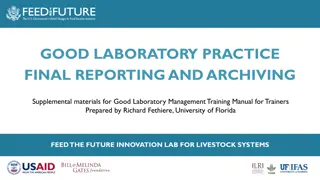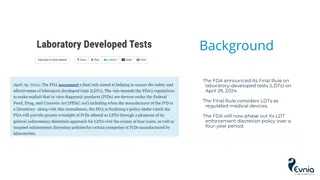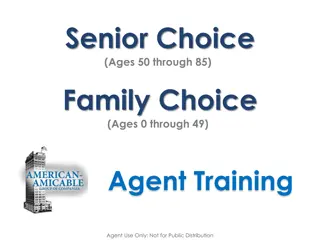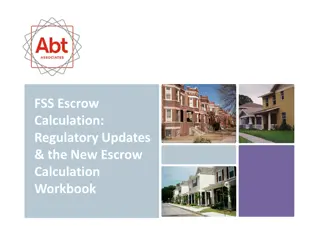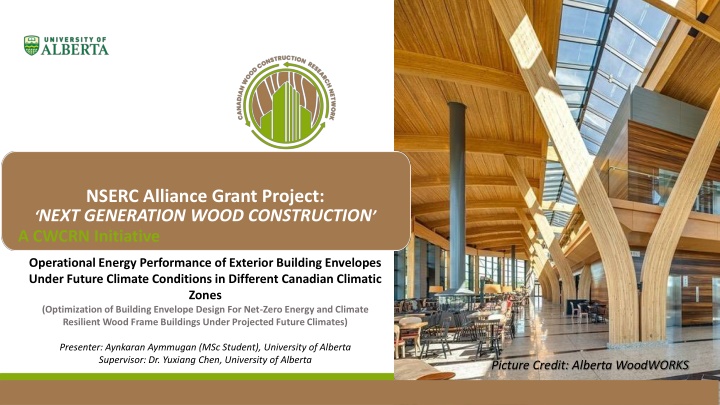
Operational Energy Performance of Exterior Building Envelopes Under Future Canadian Climate Conditions
This project aims to optimize building envelope designs for net-zero energy and climate-resilient wood frame buildings in Canada's various climatic zones. Through the analysis of operational energy performance under future climate scenarios, recommendations for weather file criteria and design improvements will be provided. The study utilizes IPCC-defined climate scenarios and Representative Concentration Pathways to simulate extreme cold, warm, and annual reference weather year profiles. Building on proven industry research, the project seeks to address the impacts of climate change on building performance.
Download Presentation

Please find below an Image/Link to download the presentation.
The content on the website is provided AS IS for your information and personal use only. It may not be sold, licensed, or shared on other websites without obtaining consent from the author. If you encounter any issues during the download, it is possible that the publisher has removed the file from their server.
You are allowed to download the files provided on this website for personal or commercial use, subject to the condition that they are used lawfully. All files are the property of their respective owners.
The content on the website is provided AS IS for your information and personal use only. It may not be sold, licensed, or shared on other websites without obtaining consent from the author.
E N D
Presentation Transcript
NSERC Alliance Grant Project: NEXT GENERATION WOOD CONSTRUCTION A CWCRN Initiative Operational Energy Performance of Exterior Building Envelopes Under Future Climate Conditions in Different Canadian Climatic Zones (Optimization of Building Envelope Design For Net-Zero Energy and Climate Resilient Wood Frame Buildings Under Projected Future Climates) Presenter: Aynkaran Aymmugan (MSc Student), University of Alberta Supervisor: Dr. Yuxiang Chen, University of Alberta Picture Credit: Alberta WoodWORKS
AGENDA SECTION 1: SELECTION OF FUTURE EXTREME (COLD & WARM) AND ANNUAL REFERENCE WEATHER YEAR PROFILES: Recommended criteria for weather files used in Building Simulations. Future Climate Scenarios Defined by IPCC (Intergovernmental Panel for Climate Change). Description of weather files selected for simulations. SECTION 2: ANALYSIS OF OPERATIONAL ENERGY PERFORMANCE OF TYPICAL BUILDING ENVELOPES UNDER FUTURE CLIMATE CONDITIONS IN DIFFERENT CANADIAN CLIMATE ZONES: Building envelope designs selected for Performance simulation. Future Works
SECTION 1: SELECTION OF FUTURE EXTREME (COLD & WARM) AND ANNUAL REFERENCE WEATHER YEAR PROFILES
Recommended Criteria For Weather Files To Be Used In Building Simulations Typical conditions Extreme conditions Proper temporal resolution Geographic/spatial resolutions Expresses the effect of the urban micro-climate Expresses possible future climates (Reflects climate change effects) Proven track record with industry M. Herrera et al., A review of current and future weather data for building simulation, Building Services Engineering Research and Technology, vol. 38, no. 5, pp. 602 627, Apr. 2017, doi: https://doi.org/10.1177/0143624417705937.
Future Climate Scenarios Defined by IPCC SOURCE: IPCC (2000) SOURCE: IPCC (1992)
RCP Representative Concentration Pathway SOURCE: IPCC (ASSESSMENT REPORT 5)
FOR THE PERIOD BETWEEN 2016 2035 (FOR CURRENT AND IMMEDIATE FUTURE) SOURCE: IPCC (ASSESSMENT REPORT 5)
Weather Files Selected for Simulations NRC Weather Files Consists of Reference Weather Year files Extreme temperature files consisting of Extreme Cold Year (ECY) data and Extreme Warm Year (EWY) data Typical Moisture Reference Year Extreme Moisture Reference Year Data to undertake whole building simulations. Hourly temporal resolution 11 Climate Variables. Creators: Dr. Abhishek Gaur & Dr. Michael Lacasse
The Downscaling Of CanRCM4-LE Simulations To 564 Locations In Canada SOURCE: IPCC (ASSESSMENT REPORT 6 CHAPTER 10) A. Gaur and M. Lacasse, Climate Data to Support the Adaptation of Buildings to Climate Change in Canada, Data, vol. 7, no. 4, p. 42, Apr. 2022, doi: https://doi.org/10.3390/data7040042.
Reflection of Climate Change Effects in NRC Weather Files Data are generated using historical time period of 1991-2021. Future time periods are generated for 30-year periods for various levels of ambient temperature change in the RCP 8.5 Scenario. Timeline Considered Temperature Change 2003 2033 0.5 C 2014 2044 1.0 C 2024 - 2054 1.5 C 2034 - 2064 2.0 C 2042 - 2072 2.5 C 2051 - 2081 3.0 C 2064 - 2094 3.5 C
Representation of Typical and Extreme Conditions of Weather EDMONTON TYPICAL TEMPERATURE PROFILES Typical Ambient Temperature Variation (2014 to 2044) - Edmonton 40 30 20 Ambient Temperature (oC) 10 0 1 153 305 457 609 761 913 1065 1217 1369 1521 1673 1825 1977 2129 2281 2433 2585 2737 2889 3041 3193 3345 3497 3649 3801 3953 4105 4257 4409 4561 4713 4865 5017 5169 5321 5473 5625 5777 5929 6081 6233 6385 6537 6689 6841 6993 7145 7297 7449 7601 7753 7905 8057 8209 8361 8513 8665 -10 -20 -30 -40 -50 Hours
EDMONTON EXTREME TEMPERATURE PROFILES Extreme (Cold & Warm) Temperature Years - (2014 to 2044) Edmonton 50 40 30 Ambient Temperature (oC) 20 10 0 EWY -10 ECY -20 -30 -40 -50 -60 Hours EWY Extreme Warm Year ECY Extreme Cold Year
SECTION 2: ANALYSIS OF OPERATIONAL ENERGY PERFORMANCE OF TYPICAL BUILDING ENVELOPES IN DIFFERENT CANADIAN CLIMATE ZONES
Building Envelope Designs Masonry Ties Brick Veneer Masonry Cavity Wall
Building Envelope Designs Wood Stud Wall
Canadian Climate Zones As defined by NRC Canadian Climate Zone City NECB 2020 Prescribed RSI values R Value (Imperial Units) Weather File Location Considered representing the Climate Zone Toronto International Airport Zone 5 Toronto 3.8 21.6 Vancouver International Airport Zone 4 Vancouver 3.5 19.9 Edmonton International Airport Zone 7A Edmonton 4.7 26.7 Yellowknife Airport Zone 8 Yellowknife 6.1 34.6
Selection of Weather Files For Envelope Performance Simulation Building Envelope Lifespan of 50 Years RWY for 2014-2044 RWY for 2064-2094 Average Temperature (oC) 2074 2024 Timeline (Years) RWY Reference Weather Year
JOURNEY SO FAR & FUTURE WORKS 2023 2024 Category Activities WinterSpring/ Summer Fall WinterSpring/ Fall Winter Summer 1. Courses Finished Required Coursework - 6 Courses Preliminary Literature Review - Weather Files Selection of Typical Building Envelopes, Climate Zones for Preliminary Analysis 2. Research Work Transient simulation of heat transfer through typical Canadian Exterior Building Envelopes. Collecting data for Hygrothermal performance of CLT from CLT basement located at South Campus, University of Alberta. Selection of weather files for Hygrothermal simulations. Analysis of Hygrothermal responses (in 2 Dimensional plane) of CLT Panels in a Basement condition.
ANTICIPATED OUTCOMES Building Envelope Design Requirements and Solutions Optimized Under Projected Future Climates for Net Zero Energy and Thermally Resilient Buildings Across Canada Helpful information in Proposal of Change in the Current Building Codes or Design Standards. Energy Design Options Orientations & Building Components Embodied & Operational Carbon
THANK YOU THANK YOU

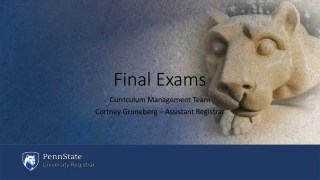
![READ⚡[PDF]✔ Yup I'm Dead...Now What? The Deluxe Edition: A Guide to My Life Info](/thumb/20463/read-pdf-yup-i-m-dead-now-what-the-deluxe-edition-a-guide-to-my-life-info.jpg)



